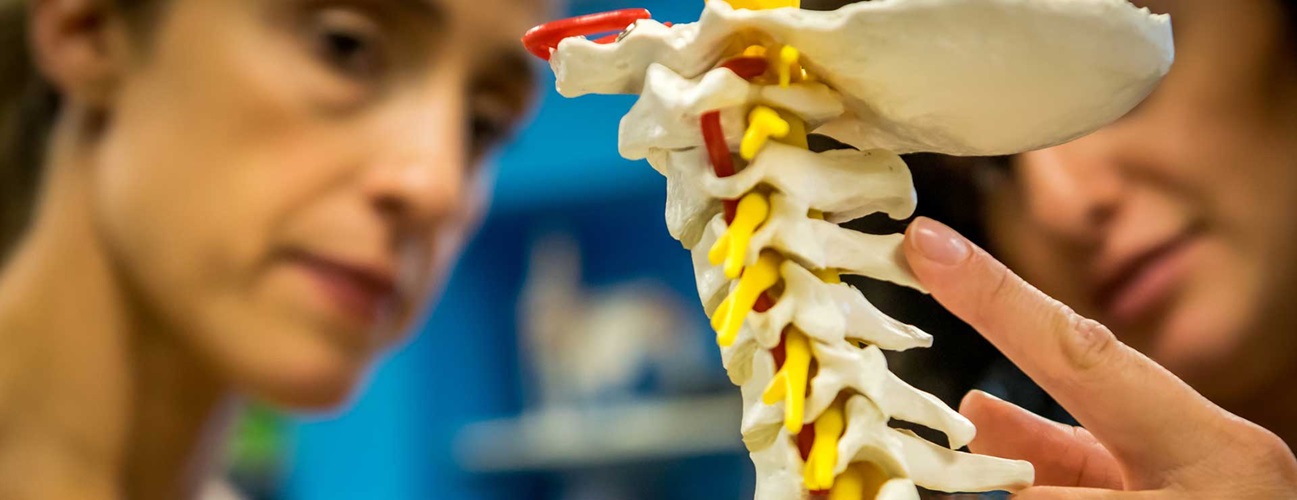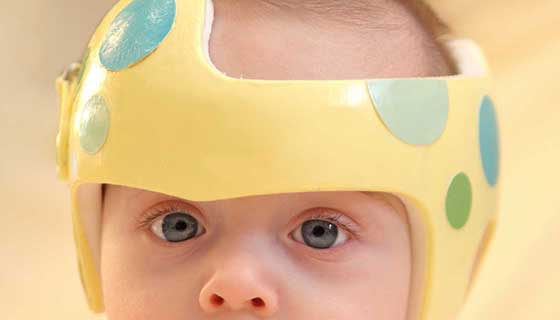Cervical Spondylosis
Cervical spondylosis is a type of degenerative disease that affects your neck. Normally, soft disks between your vertebrae, the bones in your spine, provide cushioning. With cervical spondylosis, these disks become compressed.
When this happens, the cartilage that lines the vertebrae on each side of the disc, where they touch, can wear away. Once this protective cartilage is gone, spurs may develop on your vertebrae where they rub together. Nerves attached to your spinal cord may have less room to pass between the vertebrae on their way out of the spine.
Facts about cervical spondylosis
This condition becomes more common with age. Many, however, don't have symptoms—you may not even be aware that these changes are going on in your neck.
Cervical spondylosis usually doesn't lead to disability. But sometimes these changes in the spine can cause the spinal cord or nerve roots attached to it to become compressed. This can cause your legs or hands to feel weak or clumsy.
Symptoms
Symptoms of cervical spondylosis can include:
-
Pain in the neck that may travel to your arms or shoulders
-
Headaches
-
A grinding feeling when you move your neck
-
Weakness in your arms and legs
-
Numbness in your shoulders, arms, or hands
-
Stiffness in the neck
-
Trouble keeping your balance
-
Trouble controlling your bladder or bowels
Diagnosis
Your healthcare provider will give you a physical examination to see if you have this condition. You will probably discuss any neck injuries you've had and describe your symptoms. The healthcare provider will probably check your neck, shoulders, arms, and legs to see how well they're working. Other tests that may help make a diagnosis include:
-
Imaging tests. X-rays, MRIs, and CT scans all provide images of the structures in your spine for the healthcare provider to see. These can show the bones, disks, muscles, and nerves in and around your neck, as well as your spinal cord.
-
Myelography. During this test, the healthcare provider injects a dye into the fluid around your spinal cord and then does a CT scan to see how the bone spurs and disks are interacting with the individual nerves.
-
Electromyography. This test shows how well your nerves are passing along signals from your spinal cord to your muscles.
Treatment
Your healthcare provider can recommend a variety of treatments for pain relief from cervical spondylosis, depending on your needs. These may include:
-
Medicines. Nonsteroidal anti-inflammatory medicines, like ibuprofen or aspirin, opioid pain relievers, and muscle relaxants may help.
-
Physical therapy. A physical therapist can teach you stretching and strengthening exercises that may ease symptoms.
-
Ice or heat. Cool your neck with an ice pack or heat it with a warming pad as directed by your healthcare provider or physical therapist.
-
Collar. Wearing a soft collar around your neck for short periods may help your symptoms. It can cause your neck to weaken, however, if you wear it too long.
-
Injections. A healthcare provider can inject steroid medicine and pain-relieving drugs into the painful joint in your neck or into the space next to your spinal cord.
-
Surgery. In most cases, surgery is not needed. But surgeons can do different procedures to relieve pressure on the spinal cord or the nerves leaving your spine, if necessary. A surgeon can remove bone from around the opening that allows the nerve to exit the spine or bone from other parts of the vertebrae. He or she may also fuse bones in the spine after 1 of these procedures. If you have surgery, an anesthesia provider will put you to sleep beforehand so you don't feel it.
Prevention
You may not be able to prevent cervical spondylosis, but these steps may reduce your risk:
-
Stay physically active.
-
Use good posture.
-
Prevent neck injuries by always using the right equipment and the right form when exercising or playing sports.
-
Avoid trauma to your neck
Managing cervical spondylosis
Talk with your healthcare provider about the best nonsurgical steps to help relieve your symptoms. The best way to go could possibly be a combination approach of medicine and physical therapy.






